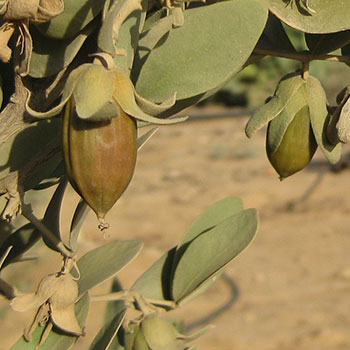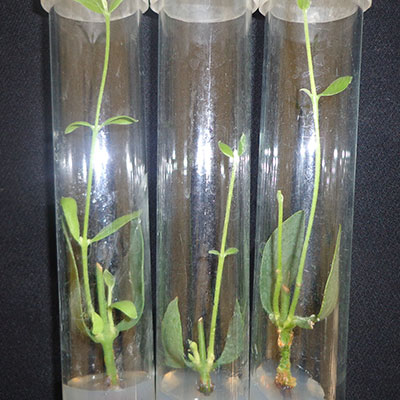Jojoba is native to the Sonora Desert of Northwestern Mexico and the Southwestern United States. Its uses as a skin care product were discovered hundreds of years ago, but it did not rise to prominence because of cheap and plentiful supplies of sperm whale oil and petroleum-based products. However, the banning of whale hunting and a series of oil crises in the Middle East in the 1970s and 1980s forced cosmetic companies to search for alternative, renewable sources of inputs for their products. In addition, consumers began demanding high-quality, all natural and sustainably produced ingredients. These forces have caused a surge of interest in jojoba.
The first documented uses of jojoba (pronounced ho-HO-ba) are by the Amerindians in the Sonora Desert region of Northern Mexico and the Southwestern United States. Spanish explorers and missionaries reported that the Amerindians used jojoba for cosmetic and medical purposes, and believed it contained “mystical” properties which could cure aliments such as skin disorders and help heal scratches, cuts, and bruises. Early researchers in the 1930s discovered that jojoba was fundamentally different on a chemical level than any other naturally occurring oil or solid fat, but by the 1960s and 1970s jojoba oil had fallen into obscurity.
One reason jojoba did not reach its full potential earlier was the abundance of cheap sperm whale oil available during that time. From the early 18th century, the sperm whale was hunted to obtain spermaciti (a waxy substance from the whale’s head), sperm oil and ambergris. These products were in turn used in candles, soaps, cosmetics, lamp oil, machine oil, perfumes and fragrances. It is estimated that 200,000 sperm whales were killed in the 19th century, and at least 770,000 were killed in the 20th century, leaving about 30% of pre-hunting levels. It is currently listed as an vulnerable species.
However, two series of events transpired in the 1970s and 1980s to bring about a renewed interest in jojoba. The first was an increasing emphasis of the International Whaling Commission (IWC) on whale conservation vice its previous emphasis on quota distribution. In 1979 the UK, US and Seychelles proposed a stop to the hunting of sperm whales, but the proposal was defeated by a number of other countries. However, manufacturers which used whale oil in their products took notice that the age of unlimited whale hunting was coming to an end, and began to look for alternative sources of raw material. In 1986 the IWC issued a ban on all commercial whaling.
The second series of events was related to the increasing instability in petroleum oil supplied from the Middle East. This trend began with the 1973 OPEC oil embargo, which increased the price of a barrel of oil fourfold over the course of a few months. The 1970s and 1980s were also generally a period of Middle East turmoil, and included Arab-Israeli wars in 1967 and 1973, the start of the Lebanese civil war in 1975, the Iranian Revolution in 1979, the start of the Iraq-Iran War in 1980 and the assassination of Egyptian Anwar Sadar in 1981.
In addition to its use as a fuel, petroleum was, and continues to be used today, in cosmetics in the form of petroleum jelly. Mid-East turmoil not only increased the price of raw oil, but its derivatives as well, quickly increasing the price of an important input with no end in sight. The cosmetic industry was forced to react, and began a more intensive search for a substitute which provided high quality moisturization, had naturally occuring chemical properties lending itself to cosmetic manufacturing, was a renewable resource and had a stable supply not impacted by distant and unpredictable political events.
While the primary impetus for the search for renewable plant substitutes were commercial, namely supply chain and input price stability, other factors were also at play. Chief among these was an increasing worldwide recognition of the importance of protecting and cherishing the world’s animal and plant resources. Thankfully this concern for the natural environment has continued to grow, further reinforcing jojoba’s rightful place as a prime candidate for commercial use.








